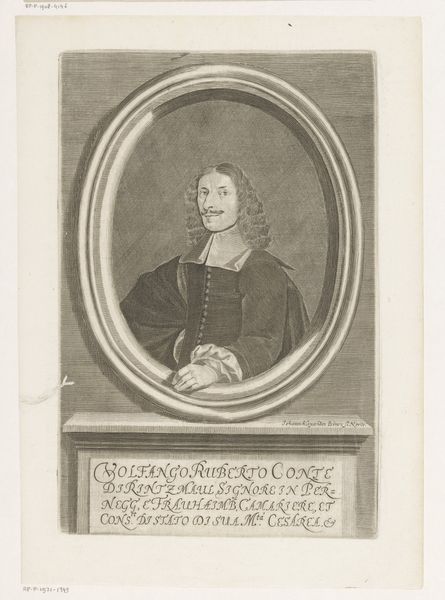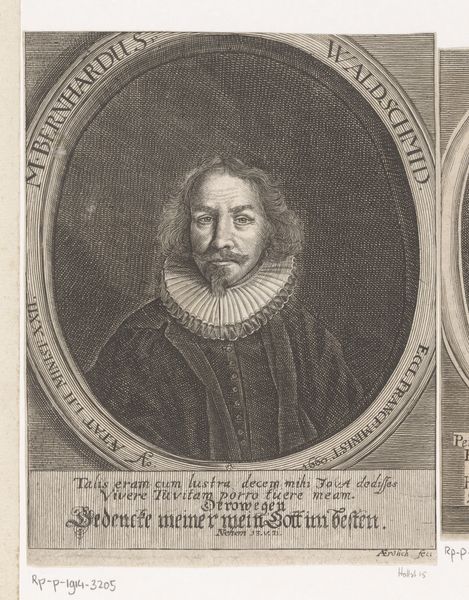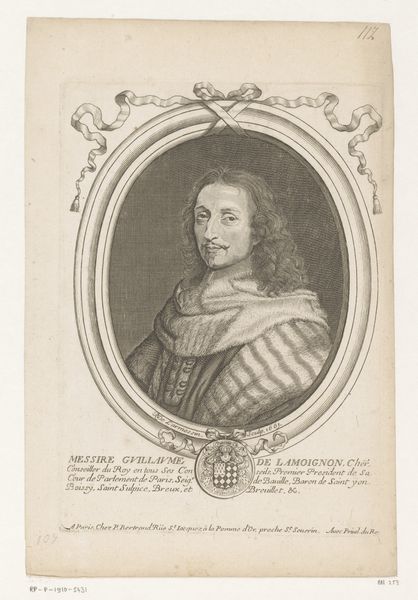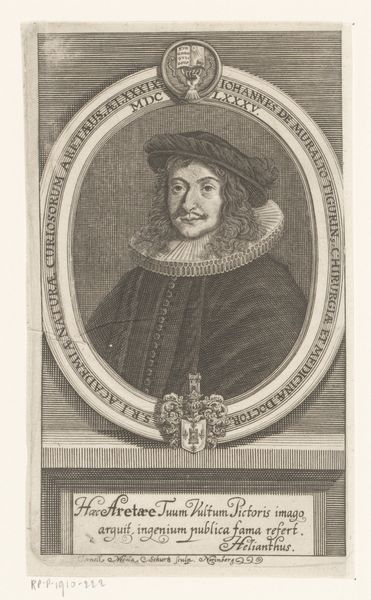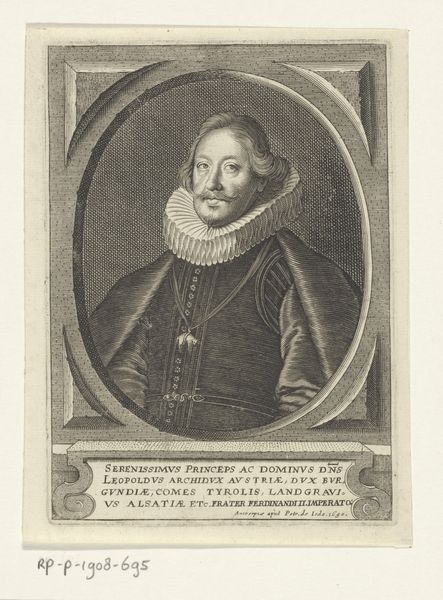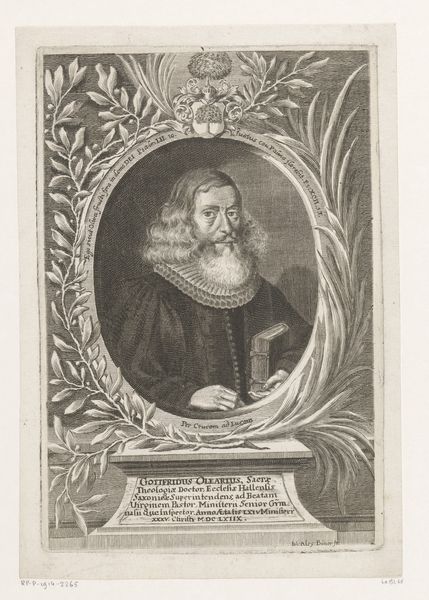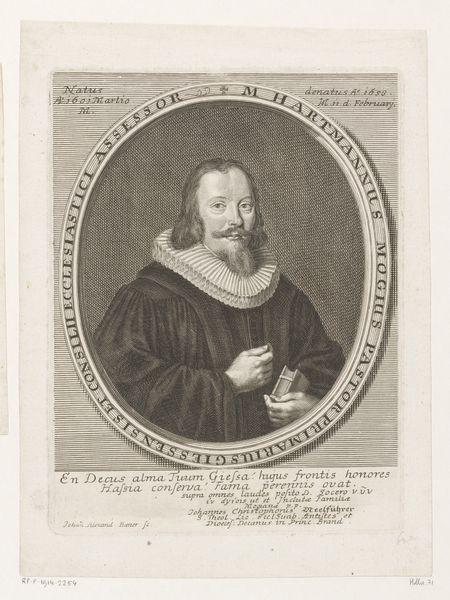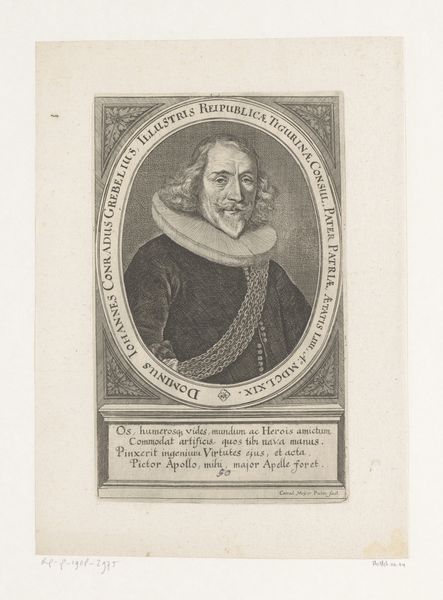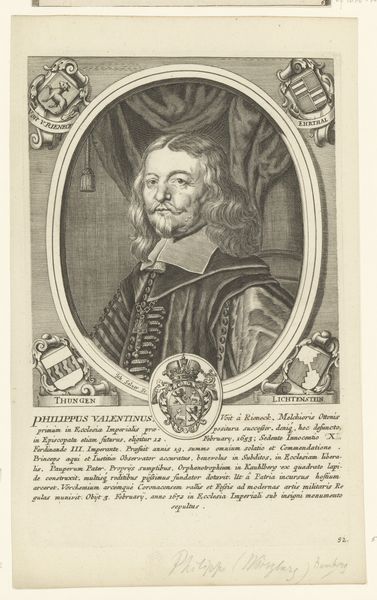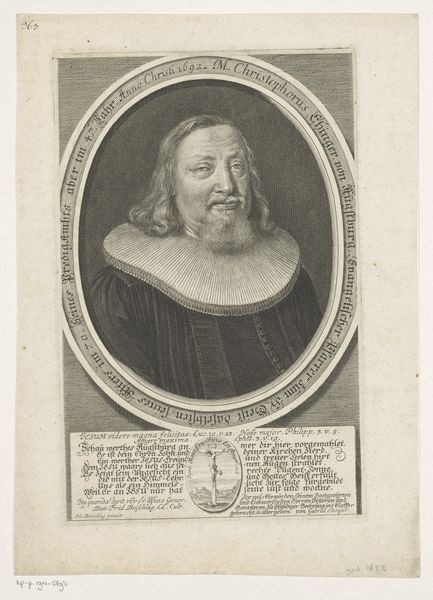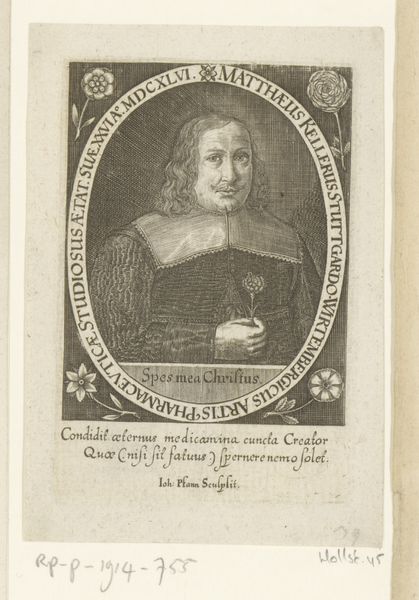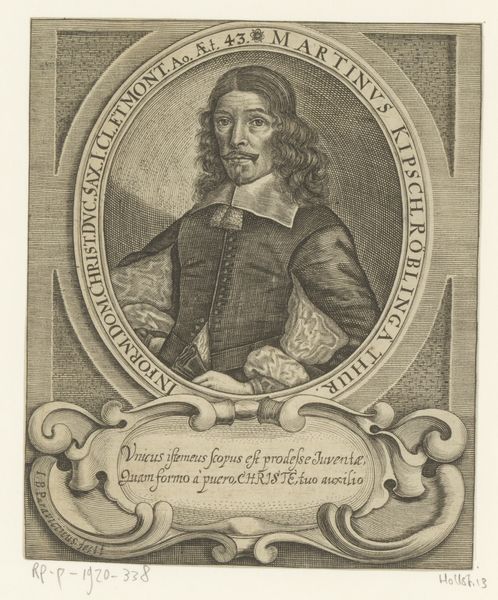
print, engraving
#
portrait
#
baroque
# print
#
line
#
engraving
Dimensions: height 180 mm, width 142 mm
Copyright: Rijks Museum: Open Domain
Curator: So, what grabs you first about this portrait? Editor: The gravity, immediately. He's encircled by what feels like pronouncements and epitaphs—it lends the work such weight. It’s a portrait of consequence, of someone very aware of their place. Curator: Precisely. This engraving, "Portret van Josua Arnd," created in 1669 by Cornelis Nicolaus Schurtz, presents us with a man both of his time and, strangely, ahead of it. Note the Baroque embellishments and how the inscription surrounding the central image further illuminates this man. Editor: He looks rather somber. What more do we know about Arnd? He has an air of serious… ministry? Or is that my own projection? Curator: Indeed. Arnd was a theologian, a significant figure in his day. The text itself speaks volumes. The phrase "Pulveris ista perit" hints at mortality. That Baroque interest in drama and transformation… The whole thing’s theatrical. He’s quite literally framed. Editor: He certainly is. It’s as if we’re peering into some hallowed shrine, with him its relic. Does the inscription shed light on the sociopolitical landscape? Curator: It reminds us that in the 17th century, image and text worked in concert to convey not just likeness, but legacy. The work served as propaganda in the best sense, cementing his image within religious and scholarly circles of the time. To disseminate his ideas, you need to be disseminated as well. Editor: Thinking of it as "propaganda" alters my sense of him; less a contemplative figure, more a brand. Curator: Perhaps a bit of both? In his world, the personal and the public were even more intertwined. I'm glad you noticed that tension. It's what keeps me returning to this piece. Editor: It feels like looking through a keyhole at history wrestling with its image. A little daunting, a little sad. Thank you.
Comments
No comments
Be the first to comment and join the conversation on the ultimate creative platform.
